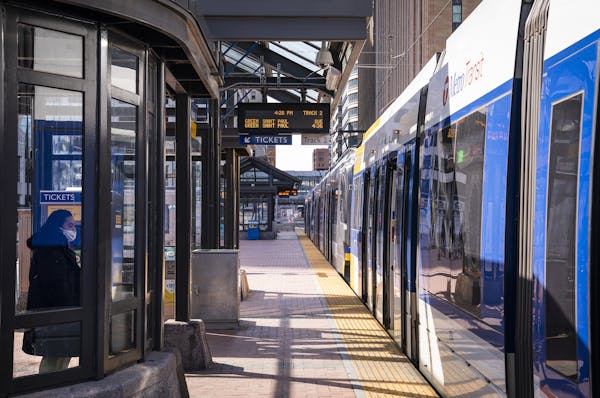Metro Transit ridership figures released Monday for this year's first quarter confirm that COVID-19 has had a devastating effect on Twin Cities public transportation.
Some 7.6 million people took trains, buses, Metro Mobility, Transit Link and vanpool service between January and March, a 56% decline when compared with 17.3 million passengers in the same period in 2020 — just before the coronavirus firmly took hold.
"The picture has not been good," said John Harper, Metro Transit Contracted Transit Service manager, at a Metropolitan Council Transportation Committee meeting Monday.
The most popular mode of transit was local bus service and light rail, while Northstar commuter rail and express bus routes suffered the most as thousands of people continued to work from home.
Still, all modes reported ridership declines in the first quarter. Local bus service was down 58%, and light rail 55%.
Among the bus categories, bus rapid transit service — including the popular A and C rapid bus lines — fared the best, down 43% in the quarter.
Northstar ridership was 7,201 in the quarter, a 95% plunge. The sluggish performance of the Northstar commuter rail, which links downtown Minneapolis and Big Lake through the northwestern suburbs, has prompted officials to study its fate.
When asked whether a perceived lack of safety may be a factor hampering ridership returns, Metro Transit General Manager Wes Kooistra said initiatives are well underway to improve cleanliness and safety at stations and on buses and trains. That includes real-time camera monitoring and plastic seat installation on light rail.
During most of the pandemic, Metro Transit limited riders to essential trips, and curtailed the number of passengers on buses and trains to promote social distancing.
That mandate was lifted May 28, but federal regulations still call for passengers to wear masks on buses and trains through Sept. 13.
Ridership trends do appear to be slowly improving when comparing this year's first three months to the final quarter of 2020. Bus and Northstar ridership were down only 4% and 3%, respectively, and ridership on the Blue and Green light-rail lines actually increased by 8%.
"We are starting to see rebounds in service," Harper said.

University of Minnesota police arrest 9 after pro-Palestinian encampment set up on campus
2 dead in Lino Lakes, no known threat to public, police say
Teen charged with murder in deadly St. Paul shooting last month

